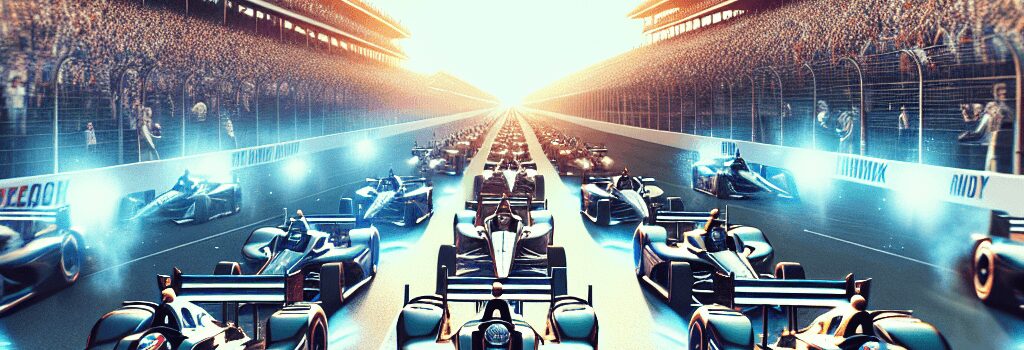Tech and Training Fuel IndyCar Success at the 500

Memorial Day Weekend at IMS: A Convergence of Speed and Innovation
This Memorial Day Sunday marks the 109th running of the Indianapolis 500, America’s most storied motorsport event. The Speedway is sold out for the first time since the 2016 centenary race, and this year’s field features a rookie on pole, a new team in the series, and two former champions primed for a late-charging strategy from deep in the pack.
Mental & Physical Preparation
Training Regimen & Biometrics
Andretti Global’s Marcus Ericsson, winner of the 2022 Indy 500, describes months of periodized physical training to build neck strength, cardiovascular endurance, and heat tolerance. Drivers log 8–10 weekly sessions with a performance coach, including:
- Isometric neck exercises to sustain 3–4 G lateral loads in high-speed turns
- Continuous heart-rate and VO2 max monitoring during simulated hot laps
- Heat-chamber acclimation at 45 °C to reduce core-temperature drift
Weekly mental coaching employs neurofeedback to shorten reaction times by 10–15 milliseconds, ensuring split-second decision-making under sustained 200 mph runs.
Advanced Simulation & Digital Twin
Multi-Axis Driver-In-the-Loop (DiL) Simulators
Kyle Kirkwood points to the new Honda Racing Corporation (HRC) simulators in Indiana, each built around an 8-degree-of-freedom motion platform, CarSim real-time vehicle dynamics, and a cloud-connected compute cluster. These rigs reproduce:
- Tire models with thermo-mechanical coupling and Magic Formula parameters
- Aero balance shifts due to center-of-pressure migration at 225 mph
- Suspension kinematics under high-downforce load cases
Teams validate sim-to-track correlation within 0.2 percent for lap-time predictions, enabling engineers to run thousands of configuration permutations remotely.
Digital Twin & Cloud HPC Workflows
Under an AWS partnership announced in April 2025, Andretti’s digital-twin framework now leverages NVIDIA A100 GPUs and CUDA-accelerated CFD to iterate front-wing rake and underfloor venturi profiles. Each overnight batch can test over 5,000 aero/hydroelastic designs, cutting track test days by 30 percent.
Hybrid Powertrain Integration
This season’s introduction of a supercapacitor-based hybrid system has added 105 lbs to the rear assembly, shifting the car’s center of gravity rearward by roughly 15 mm. Key specs include:
- 600 V, 250 F supercapacitor bank delivering 80 kW of regenerative power
- MGU-K energy recovery from deceleration zones up to 2500 N·m torque input
- Liquid-cooled busbars and bespoke radiators in sidepods to manage 12 kW heat loads
Drivers report a more abrupt rear traction curve, demanding refined throttle mapping and updated traction-control algorithms tuned in the sim.
Data Analytics & Physiological Monitoring
Telemetry & Real-Time Dashboards
Each car streams over 10 Mbps of CAN-bus data—engine RPM, brake-pressure gradient, and pedal force—back to pitlane via 5G. Engineers use Kalman filters to fuse sensor streams and detect drift in damper response within 0.5 percent tolerance.
Wearable Sensors & Driver Health
For the first time, drivers wear chest-strap ECG sensors and in-helmet EEG electrodes. This real-time biometric data is overlaid with lap-time sector analysis to flag cognitive fatigue. An Allegra-sponsored anti-drowsy system sends vibro-alerts through the HANS device if alpha-wave activity rises above threshold.
Race Strategy & Pit Stop Technology
Fuel & Tire Modeling
Engine maps optimized for methanol blends now feature dual-stage injection timing, balancing peak power (675 hp) against 20 percent lower thermal loads. Computational models predict under-green and under-yellow stint fuel consumption within 0.1 kg/lap.
Automated Pit-Stop Tools
- RFID-tagged wheel guns report torque status in 10 ms
- AI-guided jacking systems ensure perfect chassis lift to within 2 mm
- High-speed vision systems track tyre-changer efficiency and flag anomalies
Optimized pit sequencing can yield a 1.5 second advantage over rivals.
Looking Ahead: Future IndyCar Innovations
At the 2025 IndyCar Tech Summit last month, officials unveiled the 2026 Gen 3 regulations: a twin-turbocharged 2.4 L V6 hybrid, 250 kW MGU-K units, and fully electric pit equipment. NVIDIA and Siemens are collaborating on AI-driven aero development, while IMS is trialing a smart track pilot with embedded fiber-optic strain sensors for real-time surface monitoring.
The next frontier will be AI-powered strategy bots that can simulate yellow-flag scenarios with sub-second accuracy, transforming in-race decision-making.
All these advancements promise an even higher bar for driver skill, team coordination, and technical innovation at the Indianapolis 500 and beyond.